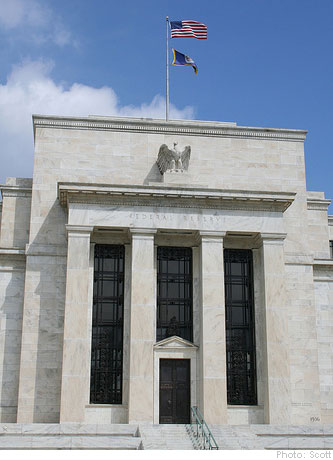 Janet L. Yellen, President and CEO of Federal Reserve Bank of San Francisco, said Monday that while there is convincing evidence that an economic recovery is well under way (real GDP has turned around impressively ; printing at a robust 5.7% annual rate in Q4’09), the U.S. economy is still far from where it needs to be.
Janet L. Yellen, President and CEO of Federal Reserve Bank of San Francisco, said Monday that while there is convincing evidence that an economic recovery is well under way (real GDP has turned around impressively ; printing at a robust 5.7% annual rate in Q4’09), the U.S. economy is still far from where it needs to be.
Speaking before the Burnham-Moores Center for Real Estate School of BA at the University of San Diego, CA, Yellen said that she is “not at all convinced that a V-shaped recovery is in the cards”.
[emphasis added]SF FED: That fourth-quarter leap in GDP overstates the underlying momentum of the economy. Much of it was due to a slowdown in the pace at which businesses were drawing down inventory stocks compared with earlier in the year. Less than half of the fourth-quarter growth reflected higher sales to customers. Those sales did grow, but at a lackluster 2.2 percent. It appears that businesses are getting their inventories closer in line with sales, which is a good thing. But such inventory adjustments can be a potent source of growth only for a few quarters. I’d feel much more confident about the prospect for a sustained robust recovery if I saw evidence of more vigorous growth in actual sales.
On that front, the most recent data show consumers releasing somewhat their tight grips on their wallets. But that doesn’t mean that people have thrown caution to the wind and returned to their spendthrift ways. Indeed, my business contacts tell me the consumer mindset is still in a fragile state. Clearly, the big weight hanging over everyone’s heads is jobs.
…
The housing sector appears to have stabilized, but here too I don’t see any signs of a sharp turnaround. New home sales and construction finally stopped falling last year and have been reasonably stable, albeit at very low levels, for several months. Existing home sales surged late last year in response to the homebuyer tax credit. But, the credit expires this spring, so this source of support won’t be around much longer. The housing sector has also been benefiting from the Fed’s policy of buying mortgage-backed securities. These purchases appear to have helped keep home finance rates low. But, the Fed is now in the process of tapering off these purchases and plans to stop them at the end of March. As support from Federal Reserve and other government programs phases out, there is a risk that the housing market could weaken again.
…
Put it all together and you have a recipe for a moderate rate of economic growth, well below the spritely pace set in the fourth quarter. The current quarter appears on course to post growth of around 3 percent. I see the economy gradually picking up steam over the remainder of this year as households and businesses regain confidence, financial conditions improve, and banks increase the supply of credit. I expect growth of about 3½ percent for the year as a whole, picking up to about 4½ percent next year, with private demand coming on line to pick up the slack as government stimulus programs fade away.
…
This brings us to a subject that is of paramount concern to all of us—the job situation. This recession has been very severe, indeed. The U.S. economy has shed 8.4 million jobs since December 2007. That’s more than a 6 percent drop in payrolls, the largest percentage point decline since the demobilization following World War II. The unemployment rate, which was 5 percent at the start of the recession, rose to around 10 percent in late 2009. The rates of job openings and hiring are also stuck at very low levels. These statistics represent a tragedy for our country, our communities, and each of the families and individuals who have had to cope with a loss of livelihood.There is a glimmer of good news on the employment front. The pace of job losses has slowed dramatically and some indicators, such as gains in temporary jobs, suggest that we may be close to a turnaround in the labor market. I was encouraged to see the unemployment rate drop from 10 percent to 9.7 percent in January. Nonetheless, given my forecast of moderate growth and a shrinking, but still sizable, output gap, I expect unemployment to remain painfully high for years. The rate should edge down from its current level to about 9¼ percent by the end of this year and still be about 8 percent by the end of 2011, a far cry from full employment.
I should warn that there is a great deal of uncertainty surrounding this forecast.

Leave a Reply